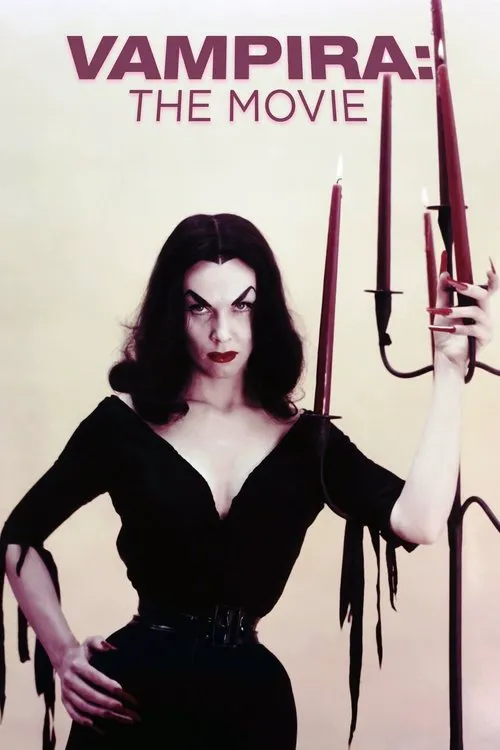Vampira: The Movie

Plot
In a world where the line between art and madness blurred, a singular figure emerged - Vampira, the embodiment of Gothic chic and seductive mystique. Behind the iconic persona was Maila "Vampira" Nurmi, a Finnish-born actress with a passion for the dark and the macabre. Her journey to celluloid cultdom was a winding path, marked by periods of triumph and heartbreak, but ultimately, it was her unwavering dedication to her craft that earned her a place in the annals of Hollywood history. The year was 1954, and television was in its infancy. The new medium was still finding its footing, but one program had captured the imagination of audiences everywhere - the horror movie anthology series "Tales of Tomorrow." It was here that Maila Nurmi first donned the mantle of Vampira, a character she would embody for years to come. With her sultry voice, seductive mannerisms, and a wardrobe that seemed to scream "I'm a creature of the night," Vampira was born. Emerging from the mist, she would greet viewers with a sly smile and an air of mystery, setting the tone for the rest of the show. As Vampira's popularity grew, so did her connections in the Hollywood community. She found herself rubbing shoulders with some of the most iconic figures of the era - Marlon Brando, James Dean, and Anthony Perkins, to name a few. These friendships not only gave her a glimpse into the lives of Hollywood's elite but also provided her with a network of supporters who would help shape her career. However, despite her growing fame, Vampira's television show was abruptly canceled, leaving Maila Nurmi to navigate the treacherous waters of show business without a safety net. Undeterred, Nurmi attempted to revive her career by appearing in films, the first of which was the infamous "Plan 9 from Outer Space" (1959). Directed by the enigmatic and troubled Edward D. Wood Jr., this low-budget horror/sci-fi epic has become notorious for its incoherent plot, wooden acting, and general air of incompetence. Yet, it was precisely this eccentricity that made "Plan 9" a cult classic, and Vampira's cameo was just the thing to make it a must-see for fans of the genre. Even if the film itself was a disaster, the character of Vampira had transcended the boundaries of good taste and poor production values, becoming an icon in her own right. The intervening years saw Nurmi continue to work in film, but it was not until the release of Tim Burton's "Ed Wood" (1993) that her legend truly came full circle. Starring Johnny Depp as the titular character, this biopic not only celebrated the life and work of Edward D. Wood Jr. but also paid loving tribute to the actors who had worked with him, including Maila Nurmi. As Vampira, Nurmi once again emerged from the shadows, this time to a newfound sense of fame and adoration. Her character's resurrection in "Ed Wood" marked a turning point in Nurmi's career, catapulting her to a level of cult status that would rival that of the infamous Bettie Page. In the years that followed, Maila "Vampira" Nurmi became something of a fixture on the convention circuit, appearing at horror and sci-fi festivals to bask in the adoration of her fans. Her image, that of a seductive, otherworldly creature, had transcended the confines of film and television, becoming a touchstone for anyone who had ever been fascinated by the darker corners of the entertainment industry. And though her career had been marked by periods of hardship and disappointment, Nurmi's unwavering dedication to her craft had earned her a place in the pantheon of cinema, an icon forever frozen in time as the embodiment of Vampira, the eternal seductress.
Reviews
Recommendations



